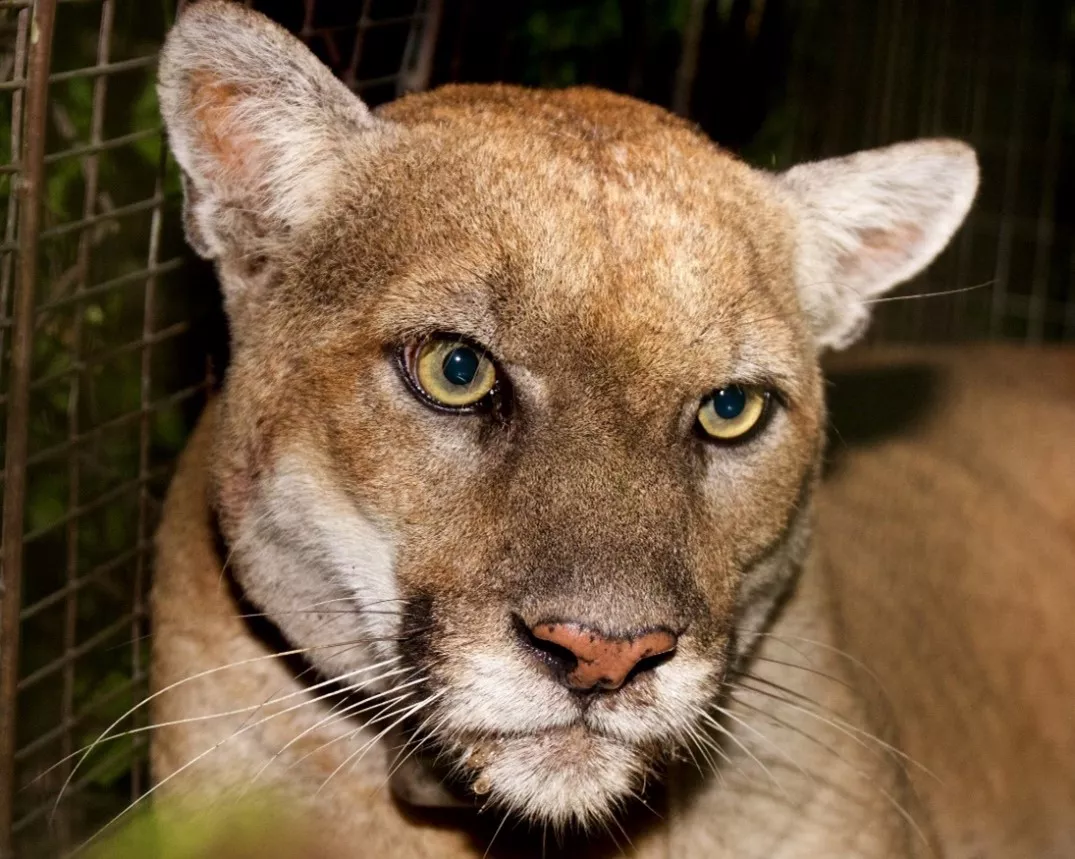We’ve heard the sad story of the loss of P-22, the mountain lion that became a celebrity in LA’s Griffith Park and adjacent neighborhoods, who succumbed to illness and injury this past year. According to Francis Appiah, a CalTrans biologist, “when it comes to southern California, we live side-by-side with wildlife. But Nevada is leading California in providing a solution to the roadkill problems that devastate us.” It’s time to listen up.

When deer, bobcats, coyotes, cougars, and other 4-footed critters that attempt to cross our freeways don’t make it, Francis and his colleagues at Caltrans get a call. I interviewed him recently to better understand their perspective on this and was amazed by his passion. “Collecting roadkill data from our freeways and highways immediately after an accident is one of the most painful experiences,” he tells me. “The loss of an individual of a particular species, the damage of to a vehicle, pain as result of the roadkill, as well as medical expenses are reasons we must help to improve culverts, under crossings, vegetation around our highways, fencing, and do more to connect open spaces, corridors and linkages for both wildlife and motorists’ safety.”
Nevada’s Department of Transportation keeps track of their roadkill. It reports that “each year in Nevada, vehicle collisions with wild and domestic/feral animals result in more than 500 reported crashes, cost the Nevada public over $19 million in crash costs, and kill an estimated 5,032 wild animals.” Since it is estimated that “more than 50 percent of such collisions can go unreported, the actual number is higher. Nationwide, these collisions cost us around $5 to $8 billion each year.
Nevada spends an average of 20 million dollars each year on animal-vehicle collisions each year to cover infrastructure damage, human injuries, loss of both human and animal life, emergency response, traffic control, travel delays and other associated economic costs.” Yet the report concludes that “if we invest a fraction of that cost into solutions to reduce those collisions, we can save taxpayers money, save lives and reconnect habitat.”
In a beautiful story about Ocelots roaming in South Texas, Ben Goldfarb gives us hope that ocelots, America’s rarest wild cats, may be adapting to the roads that divide their habitats by using tunnels which humans have installed for their benefit, and to benefit society. Goldfarb notes that such tunnels “make economic sense – most pay for themselves in a decade or two, and a study in Banff, Canada, whose national park has more than 40 wildlife underpasses and overpasses, found a 90% decrease in wildlife-vehicle collisions, which saved the park money.”
Long ago Henry David Thoreau observed “I love to see that Nature is so rife with life that myriads can be afforded to be sacrificed… that tender organizations can be so serenely squashed out of existence like pulp, tadpoles which herons gobble up, and tortoises and toads run over in the road.” (Henry David Thoreau, Walden, 1854). But that was during the days of wagon wheels, without the added challenge of climate change. Mr. Goldfarb reminds us that roadkill currently claims an estimated million vertebrates per day in the US alone, and that wildlife crossings and fences represent the most reliable solution. Do we still have a Nature that is rife with life? No. We do not. Essential to a balanced ecosystem are wildlife corridors that will help to preserve biodiversity and conserve flora and fauna that are critical to a healthy ecosystem.
Closer to home, at the UC Davis Road Ecology Center, a report by Fraser Shilling et.al., (2/1/2023) covers trends in mountain lion roadkill. Their data showed that about 70 mountain lions are hit on state highways every year, many of them clustered in Southern California. Kat Kerlin, an environmental writer at UC Davis, gives us the story of P-22 and detailed maps showing dangerous roads for mountain lions, “with local extinction becoming more likely each year.”
Here in southern California we have several projects that have challenged engineers to come up with means to protect wildlife populations that are imperiled by habitat barriers. In Orange Countywhere the health of mountain lions, bobcats, coyotes, deer are impacted by genetic isolation, the Irvine-Laguna Wildlife Corridor project is being developed to connect 20,000 acres of open space near Laguna Beach to the wilderness around the Santa Ana Mountains. (Please see The Coast to Cleveland Connection: An Essential Wildlands Link). This essential passage will enrich the natural environment of predators and prey but may require a bridge that allows unimpeded access instead of long, dark, damp tunnels that are known to deter movement.
Because this project, specifically the 6-mile wildlife corridor going under the I-5 in Irvine, has been selected as a 30-30 project for climate resilience, we have hope for biodiversity in this area. Gov. Gavin Newsom’s goal to preserve 30% of California’s land and coastal waters by 2030 is being carried out by regional groups working to preserve the ecosystem. (OC Register November 25, 2023).
Further north in LA County, the construction of US highway 101 created a formidable and virtually impenetrable barrier for many wildlife species including mountain lions, bobcats, gray foxes, coyotes and mule deer traveling between two mountain ranges. Especially for mountain lions, the result of this has been increased inbreeding, territorial fighting and very low genetic diversity.
The Wallis Annenberg Wildlife Crossing at Liberty Canyon will provide a vegetated bridge across U.S. Highway 101 (the Ventura Freeway) which aspires to be the largest wildlife crossing of its type in the nation. This bridge is critical in linking the Santa Monica Mountains with the Sierra Madre Range to sustain an ecosystem that supports imperiled wildlife populations. Imagine a beautifully landscaped crossing that is safe and appealing to critters large and small, which reduces wildlife-vehicle collisions and wildlife mortality through safe movement of animals and the exchange of genetic material needed for their survival.
Linda Pauer